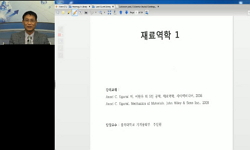Hydroforming is a forming technology in which a steel tube is set in a die and formed to fit a specified shape by applying hydraulic pressure from inside the tube while also applying force in the tube axial direction (axial feed). In present study, th...
http://chineseinput.net/에서 pinyin(병음)방식으로 중국어를 변환할 수 있습니다.
변환된 중국어를 복사하여 사용하시면 됩니다.
- 中文 을 입력하시려면 zhongwen을 입력하시고 space를누르시면됩니다.
- 北京 을 입력하시려면 beijing을 입력하시고 space를 누르시면 됩니다.
https://www.riss.kr/link?id=A76352456
-
저자
Kee Joo Kim ; Chang Won Sung ; Young Nam Baik ; Yong Heon Lee (Hanyang University) ; Dae Sung Bae ; Keun-Hwan Kim (POPSCO Co.,) ; Si-Tae Won (서울대학교)
- 발행기관
- 학술지명
- 권호사항
-
발행연도
2008
-
작성언어
English
- 주제어
-
등재정보
SCIE,KCI등재
-
자료형태
학술저널
-
수록면
55-58(4쪽)
- 제공처
- 소장기관
-
0
상세조회 -
0
다운로드
부가정보
다국어 초록 (Multilingual Abstract)
Hydroforming is a forming technology in which a steel tube is set in a die and formed to fit a specified shape by applying hydraulic pressure from inside the tube while also applying force in the tube axial direction (axial feed). In present study, the entire design process chain for an automotive cross-member was simulated and developed using hydroforming technology on high-strength steel. The part design stage required a feasibility study. The process was designed using computer-aided design techniques to confirm the actual hydroformability of the part in detail. The possibility of using hydroformable cross-member parts was examined using cross-sectional analyses, which were essential to ensure the formability of the tube material for each forming step, including pre-bending and hydroforming. The die design stage included all the components of a prototyping tool. Press interference was investigated in terms of geometry and thinning.
목차 (Table of Contents)
- 1. Introduction
- 2. Part Design
- 3. Die Design
- 4. Comparison between Simulated and Experimental Results
- 5. Conclusions
- 1. Introduction
- 2. Part Design
- 3. Die Design
- 4. Comparison between Simulated and Experimental Results
- 5. Conclusions
- REFERENCES
동일학술지(권/호) 다른 논문
-
Inkjet Printing of Single Walled Carbon Nanotubes
- 한국정밀공학회
- Jin-Wong Song
- 2008
- SCIE,KCI등재
-
Surface Encoder Based on the Half-shaded Square Patterns (HSSP)
- 한국정밀공학회
- Sang-Heon Lee
- 2008
- SCIE,KCI등재
-
Robotic Automation Technologies in Construction: A Review
- 한국정밀공학회
- Baeksuk Chu
- 2008
- SCIE,KCI등재
-
- 한국정밀공학회
- 편집부(편집자)
- 2008
- SCIE,KCI등재






 DBpia
DBpia







